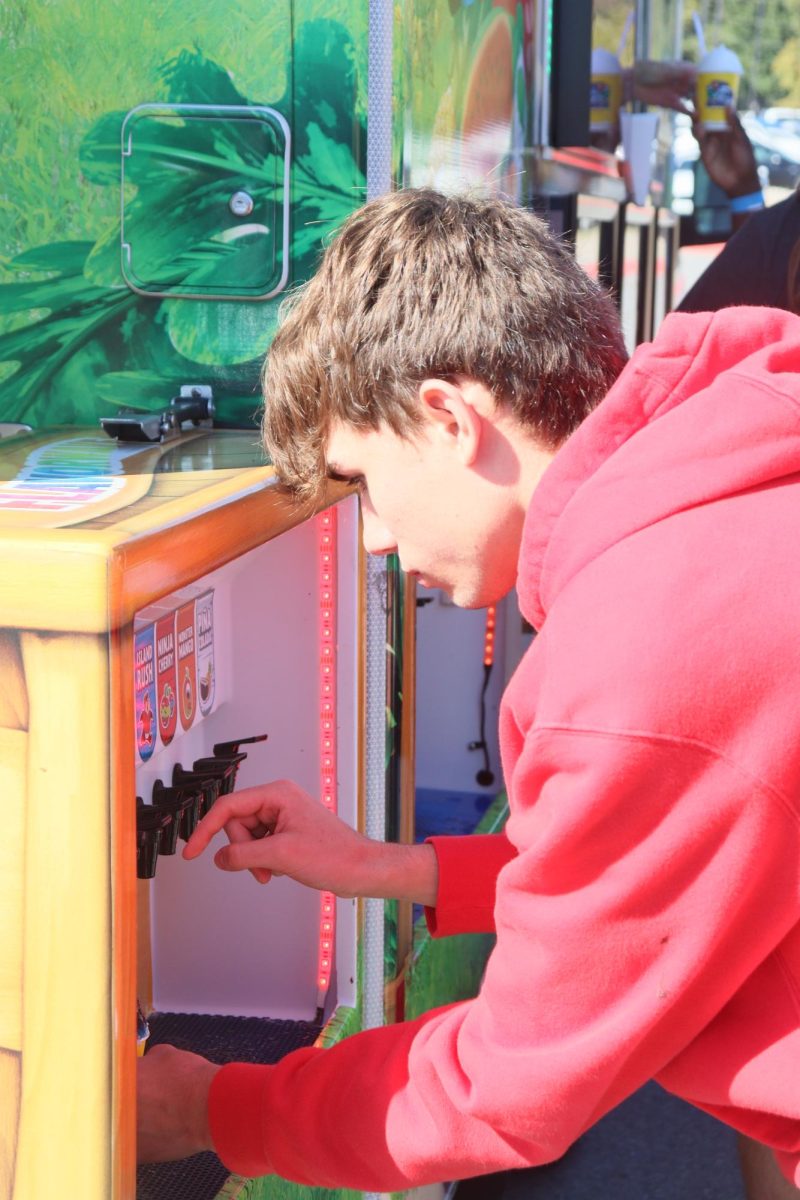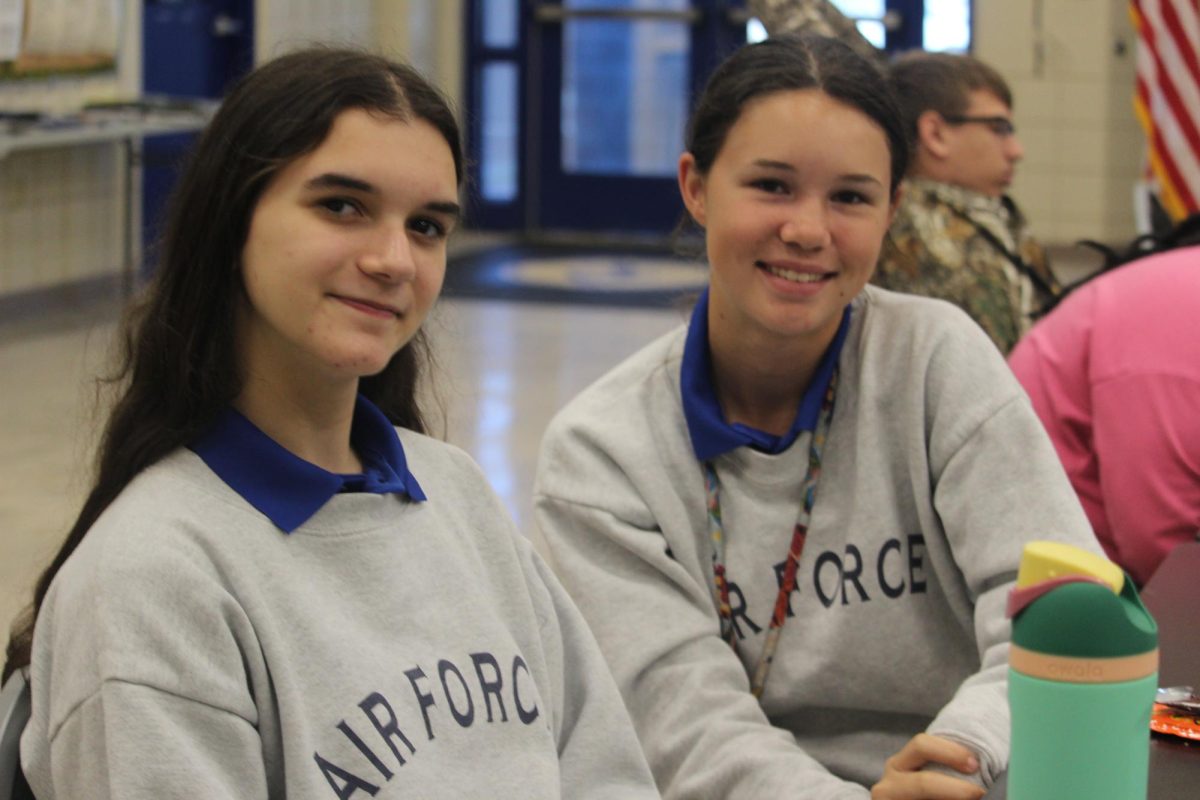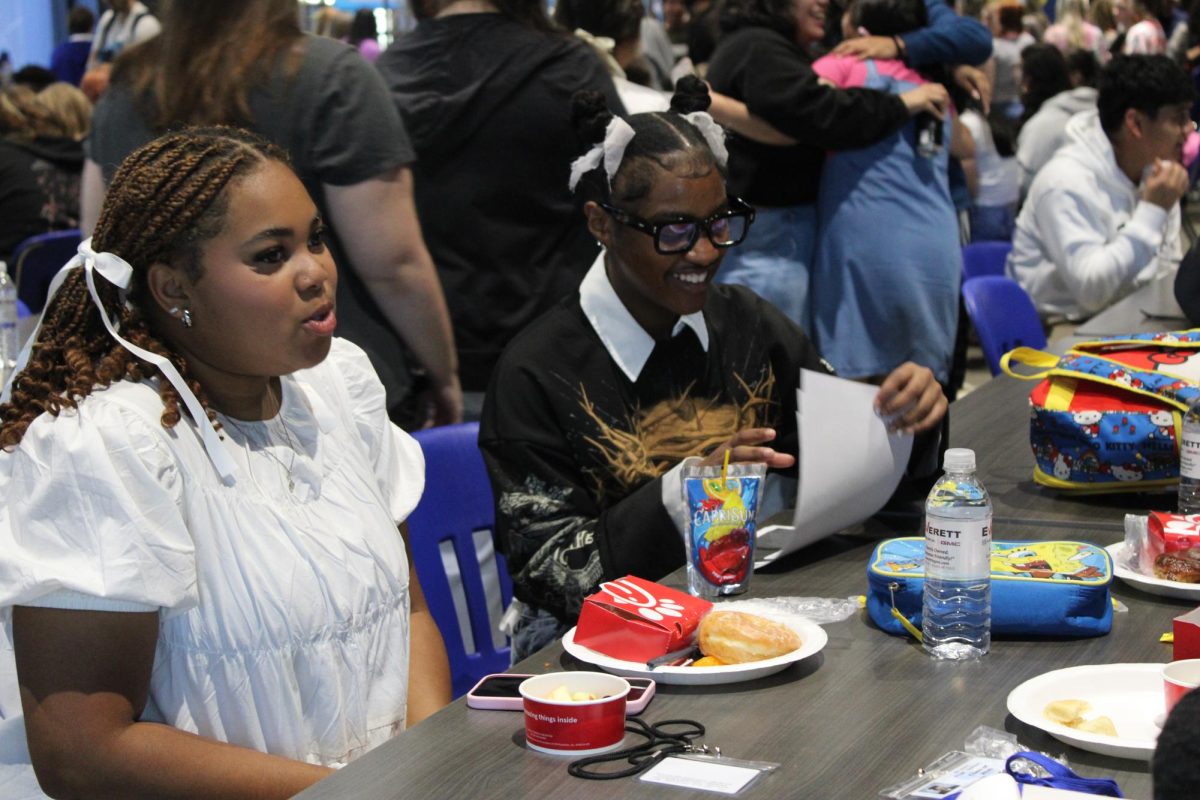
Preparing himself for a future career in computer programming and coding, junior Spencer Qualls enrolled in Mobile Applications. Qualls was determined to get into this class, and it wasn’t easy. Mobile Applications is a course for sophomores and freshman, but he wasn’t going to let that stop him.
“I’m the only junior in the class. I had to get teacher approvals and signatures to join,” Qualls said. “I wanted to be in this class because I want this to be my career.”
Sophomore Becca Cario also took this class to prepare for her future career.
“I want to work with programming when I grow up. This is what I am going to do,” Cario said. “It’s about problem solving. You have to think and figure out why something is working. That’s why I enjoy it.”
Mobile Applications, taught by Marcus Nixon, is a course developed to teach students how to make apps for iPhones and Androids.
“The goal is to introduce students to the different career paths, mobile apps developer environments, and the problem solving skills involved with developing mobile apps in the first course,” Nixon said. “I volunteered to teach the course because it was a learning opportunity. For me as a teacher, learning another skill is always beneficial. I have a real interest in e-commerce and mobile apps is another way for me to learn a growing business industry.”
Nixon attended several boot camps to get familiar with IOS and Android platforms. Although he learned both platforms, they only use the Android platform in class.
“We have four Android phones that we can put the apps on,” sophomore Caleb Zimmerman said. “We work in seven groups and share the phones among each other.”
On a typical day in Mobile Apps, the students work on projects. They work tutorials out

of a book and then work on making apps. The first project they created was Paint Pot. The user takes a picture with his phone, then can paint over it and add what he wants to it.
“Paint Pot taught us how to set up basic stuff, then we could make the game we wanted,” sophomore Presley Rogers said. “We used mostly codes and blocks to make them.”
Other projects they worked on include Mole Mash, a game where the user must smash a randomly appearing mole by tapping their finger on the screen and a sensor game. A sensor game is where the user moves the phone itself around to move the character of the game.
Once the groups finish their apps, they present to the class their app and explain how to use them. Nixon said he grades the group’s projects three ways. First, is an internal evaluation where members of the group must grade their peers. Nixon takes these into consideration when creating the final grade. Second is an external evaluation, where the other groups submit a form grading the project on creativity and originality. And last, Nixon grades the overall project with a basic rubric.
In the future there will be more classes for this course including Mobile Apps I, II and III. The first installment of Mobile Apps will be for freshman and sophomores, Mobile Apps II and III will be open to all upperclassmen that have taken the prerequisites.






